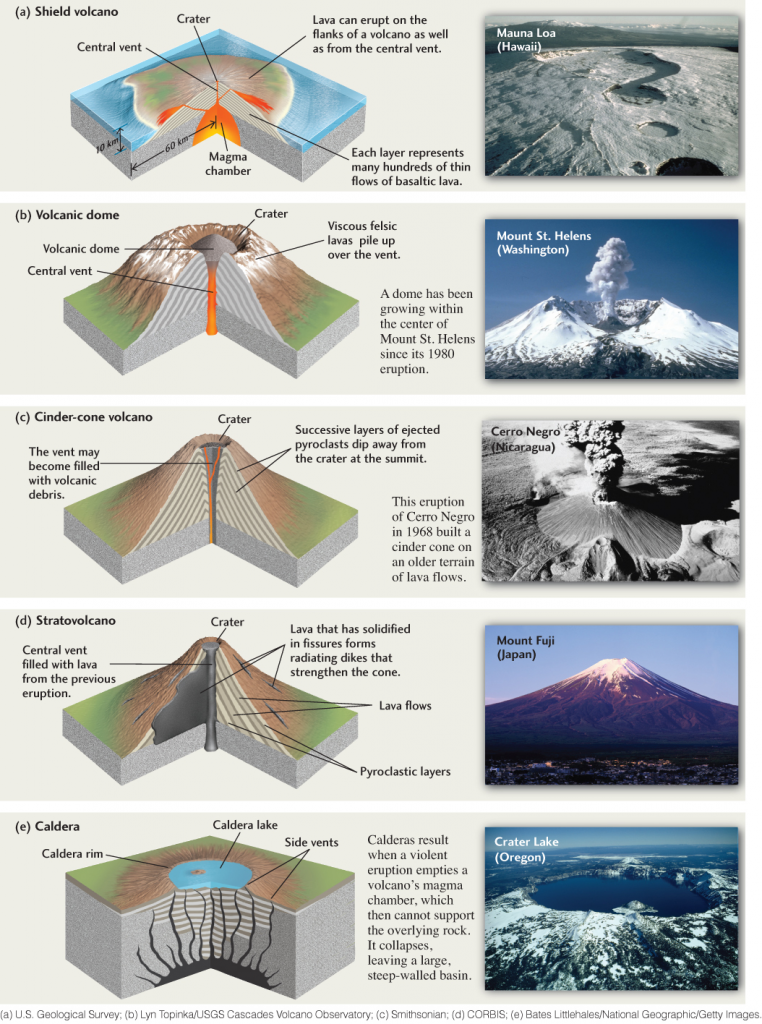Syllabus: GS1/ Geography
Context
- The recent eruption of Mount Etna in Sicily, Italy highlights the dynamic processes beneath the Earth’s crust.
What is Volcanic Eruption?
- A volcanic eruption is the expulsion of gases, rock fragments, and/or molten lava from within the Earth through a vent onto the Earth’s surface or into the atmosphere.
- Formation of Magma: Deep beneath the earth’s surface, temperature and pressure are high enough to melt parts of the mantle and crust to form molten rock called magma.
- Magma is less dense than surrounding solid rock, so it rises through the crust, collecting in underground chambers.
- Role of Gases and Pressure: Magma contains volatile compounds like water vapor, carbon dioxide, and sulfur dioxide.
- Deep underground, these gases are dissolved due to immense pressure.
- As magma ascends and pressure reduces near the surface, the gases form bubbles, increasing internal pressure.
- Eruption Mechanism:
- At tectonic boundaries or hotspots (mantle plumes), cracks and faults allow magma to push upward. If gas pressure builds up significantly, it erupts violently, releasing lava, ash, and gases.
- If magma is suddenly obstructed, the resulting pressure may also cause earthquakes or generate seismic waves.
Types of Volcanoes
- Stratovolcanoes (Composite): Tall, steep, explosive (e.g., Mount Etna, Mount Fuji).
- Shield Volcanoes: Broad, gentle slopes, fluid lava flows (e.g., Mauna Loa in Hawaii).
- Cinder Cone Volcanoes: Small, steep, single-eruption (e.g., Capulin Volcano).
- Calderas: Large depressions formed by major eruptions (e.g., Yellowstone).
- Volcanic Domes (Lava Domes): Small, rounded, steep-sided structures formed by slow extrusion of viscous lava (e.g., Novarupta Dome in Alaska).
Classification Based on Activity
- Active volcanoes: These volcanoes have erupted within the last 10,000 years or are currently erupting.
- Dormant volcanoes: These volcanoes have not erupted in a long time (typically since the last ice age, about 12,000 years ago) but are still considered capable of erupting again.
- Extinct volcanoes: These volcanoes are not expected to erupt again. They may have erupted in the past, but their magma supply has been depleted, and the volcano is no longer considered active.

Impacts of Volcanic Eruptions
- Positive Impacts:
- Fertile soils from volcanic ash.
- Geothermal energy resources.
- Creation of landforms and islands.
- Negative Impacts:
- Destruction of life and property.
- Climate change (e.g., sulfur aerosols temporarily cool the climate but disrupt global weather patterns).
- Disruption of air travel and infrastructure.
Previous article
Government to Bring New National Policy on Senior Citizens
Next article
Announcement of Census Dates